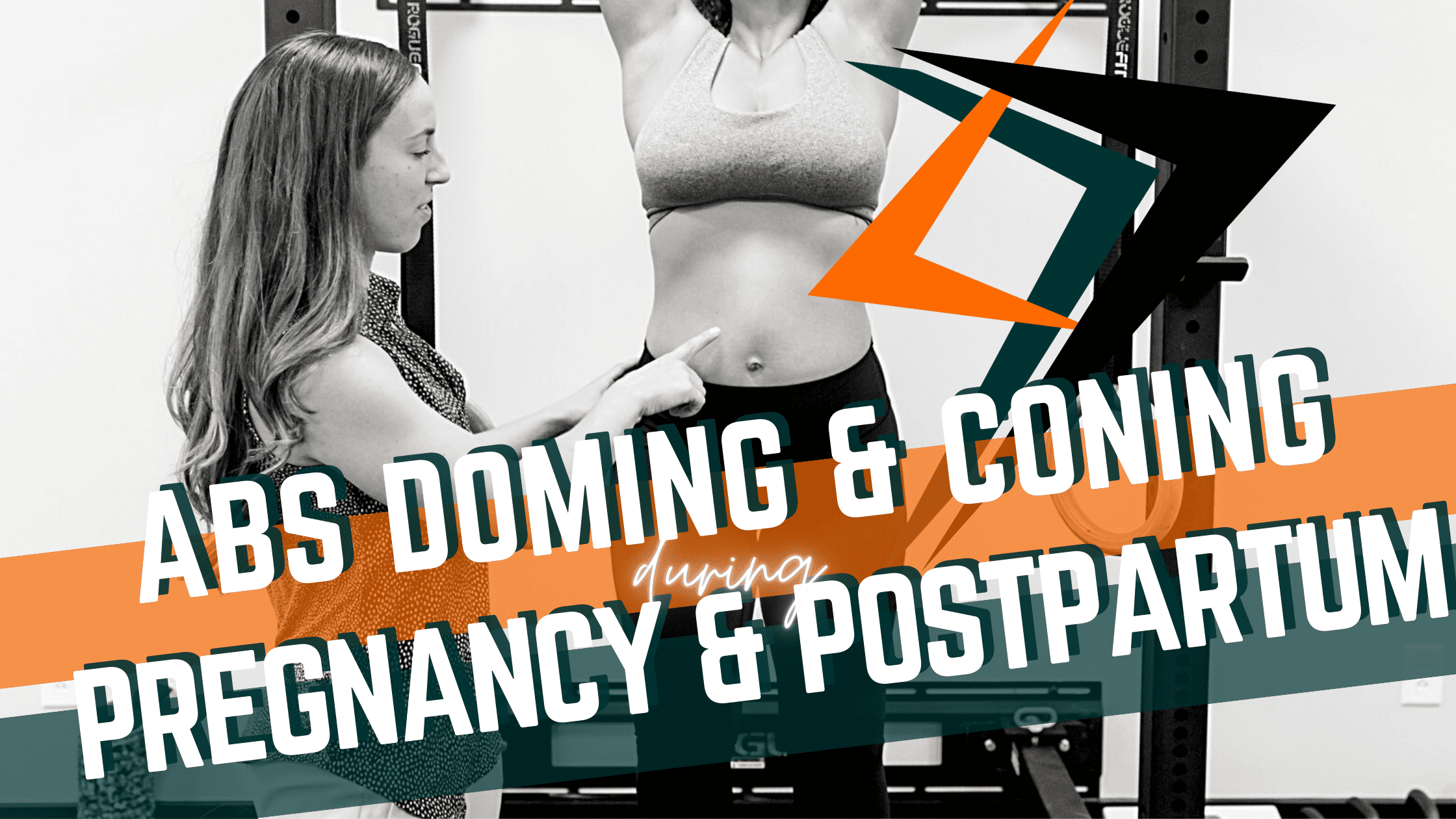
Doming & Coning: What is it?
“Doming” or “coning” are ways the belly shape changes if the task is TOO challenging for the core during ab-intense exercise. In other words, they are a visualization when your core muscles (abs) are not working effectively, during both pregnancy and postpartum.
It’s one of the four warning signs you are attempting a task too challenging for your system. (The other 3 being pain, heaviness or dragging at vagina, and leaking urine or stool.)

How do I spot it?
When you look down at your belly while doing core exercise (think: planks, pull-ups, toes to bar, hollow holds), do you see a bulge? Do you see a protrusion at your midline, from at your ribs to down toward your belly button? If you answered yes, then you’ve spotted the tell-tale sign: it’s time to modify this movement.
Why does this happen?
There is a line of tissue (“linea alba” or “LA”) connecting the left and right abdominal muscles, and this is the tissue that gets stretched as a normal part of pregnancy. When you’re able to use all your abdominal muscles cohesively, that line of tissue has good tension, creating a smooth, round belly / abdominal wall. IF, however, you’re not able to create that tension (fatigue, weakness, lack of coordination), the midline tissue bulges out, making the dome or cone shape.
When should I expect it?
It depends! If you’ve already been pregnant before, then you’re likely going to see it much sooner during core exercise: your tissues have been stretched before, and it’s oftentimes harder (sooner) to keep that tension. If you haven’t spent much time specifically training & coordinating ALL the muscles of the abdominal wall, then you’ll see it sooner than someone who has. Age can also play a role in tissue extensibility. Additionally, you’re more likely to see it at the END of a workout compared to the beginning, due to muscle fatigue.
So if it’s normal, is it bad?
To have this question answered, read on.
If your first pregnancy was 5-10+ years ago, then you’ve most likely seen quite a few changes in the conversation on fitness & pregnancy. We went from not having much guidance at all, particularly for the fitness athlete, to now “expert” opinions galore on instagram.
Sometimes it can be really tough to weed through all the information available and pick out what is true and what is not. And it’s even harder when you read two opposing ideas!
Enter: the pendulum swing. On each side, you have the extreme. And if you google or Instagram to research, you’re likely going to see the “extremes.”
We’re here to tell you: there’s a middle ground. Let us explain:
Doming is simply a sign that your core muscles are unable to perform this task you’re attempting. If they’re unable to perform, what does this mean? It means your core muscles are not getting trained.
Is that the absolute worst thing in the world? Well, no.
Should you just ignore it & get through the workout anyway? Well, not necessarily.
There’s a middle ground.
If you’re thinking about your pregnancy as *preparation for postpartum* (which I do suggest!), then you’ll A) recognize then B) modify. You will not freak out or ignore, you will simply move on. It’s the middle ground.
And why will you be taking those steps?
Because you…
- WANT to still challenge your core, to keep those muscles as strong as they physically can to prepare you for postpartum times.
- Realize you don’t know which mode of delivery you’ll experience, and you want to be prepared.
- Understand pregnancy is for now, postpartum is forever. You understand you will be able to get back to those toes-to-bar, those sit-ups.
What do I do about it?

Alright, class! It’s Pop Quiz time!
Q: What is doming & coning? ⠀
A: Signs your core muscles are not working effectively.⠀
⠀
Q: What should we do when we see those signs?⠀
A: Modify! ⠀
⠀
Q: Why do we want to modify?⠀
A: Because we want to challenge our core muscles.⠀
⠀
Q: What are the benefits of challenging our core muscles?⠀
A: Stronger muscles, better control, preparation for postpartum.⠀
⠀
Q: How do we know when too much is too much? ⠀
A: If we experience any of the following: Doming or coning; heaviness or dragging at vagina; pain anywhere; leaking urine, gas, or stool.⠀
⠀
Q: Which exercises should we do instead?⠀
?I’m so glad you asked ⠀
A: Scroll down to see videos of some of my favorite core modifications. ⠀
Modifications for Core Exercises
The following 6 core exercises are just a few of several options that exist to make sure you can continue working your core at the appropriate intensity level. It’s important to self-assess (or get your coach to watch!) as you progress both through pregnancy & postpartum phases.
You know its not too challenging (during both pregnancy & postpartum) for your core if you:
- Have a smooth belly without doming or coning
- Are not leaking pee, poo, or toot
- Experience no pain
- Do not feel heaviness, or dragging at the vagina
Exercise 1: Belly-Up Walking Ring Hang
Exercise 2: Seated Lat Pull-Downs
Exercise 3: Pallof Press
*This one you can do half-kneeling, kneeling on both knees, or standing.
Exercise 4: Seated Banded Dowel Rod Pull-Downs
You can use a PVC pipe or dowel rod to complete this. Be sure to keep from arching your low back during this one!
Exercise 5: Sitting Toe-to-Bar Modification
Exercise 6: Ball Slams
Postpartum Physical Therapy
Onward Tennessee’s Pregnant & Postpartum specialist, Dr. Alexis Morgan, PT, is both a Doctor of Physical Therapy and a Level 1 Crossfit Trainer. Being knowledgeable in both of these areas allows her to best help you bridge the gap between functional fitness and rehab. For more resources, grab the Free Guide to Return to Exercise Postpartum from Dr. Alexis Morgan, PT.
Working with Dr. Alexis allows you to maximize your potential & reach your goals. Schedule today for either an in-person session in Hendersonville, TN or a telehealth virtual visit!
Recent Articles
Achilles Tendonitis: Diagnosis & Treatment
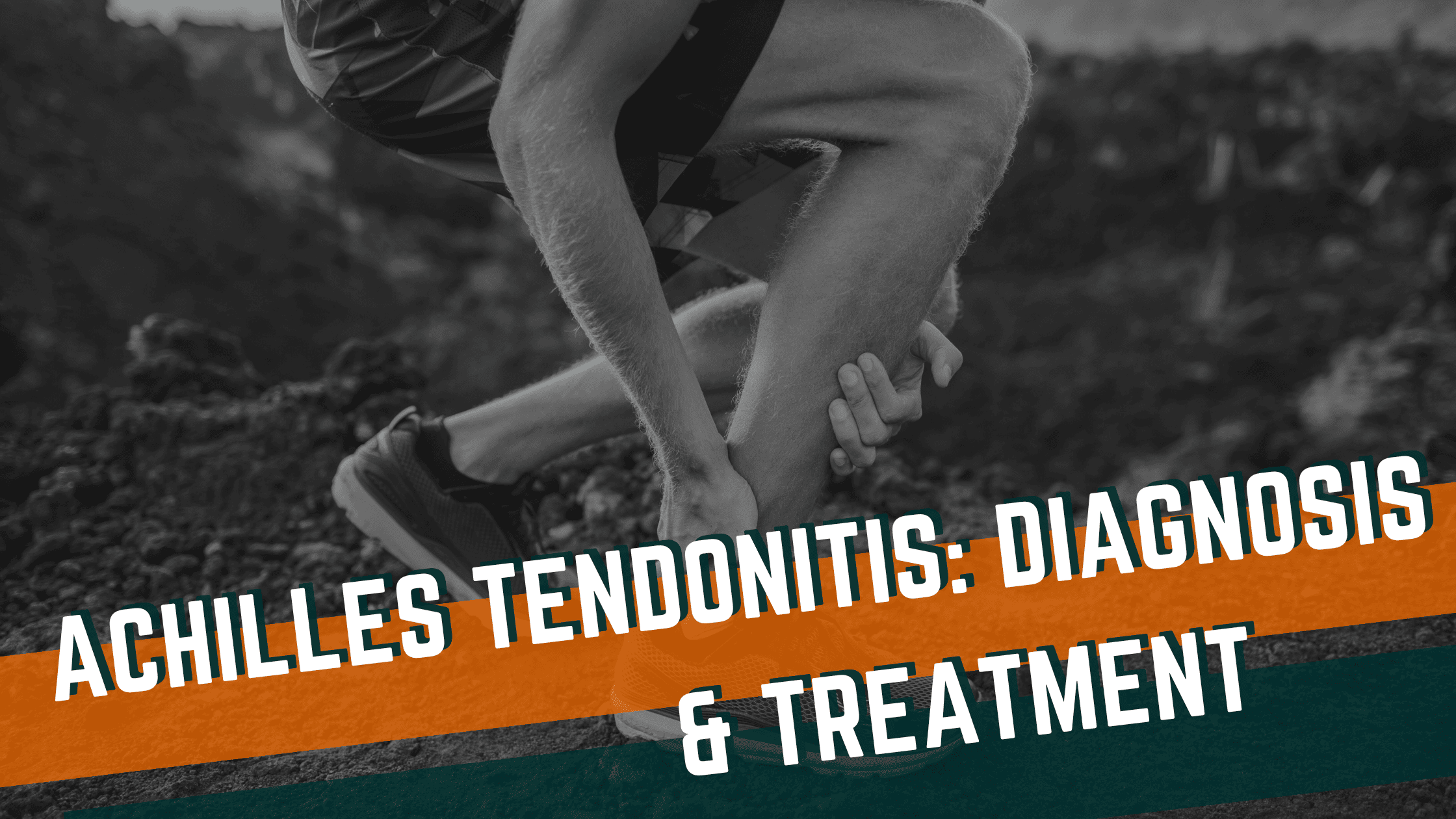
Hip Pain in Runners
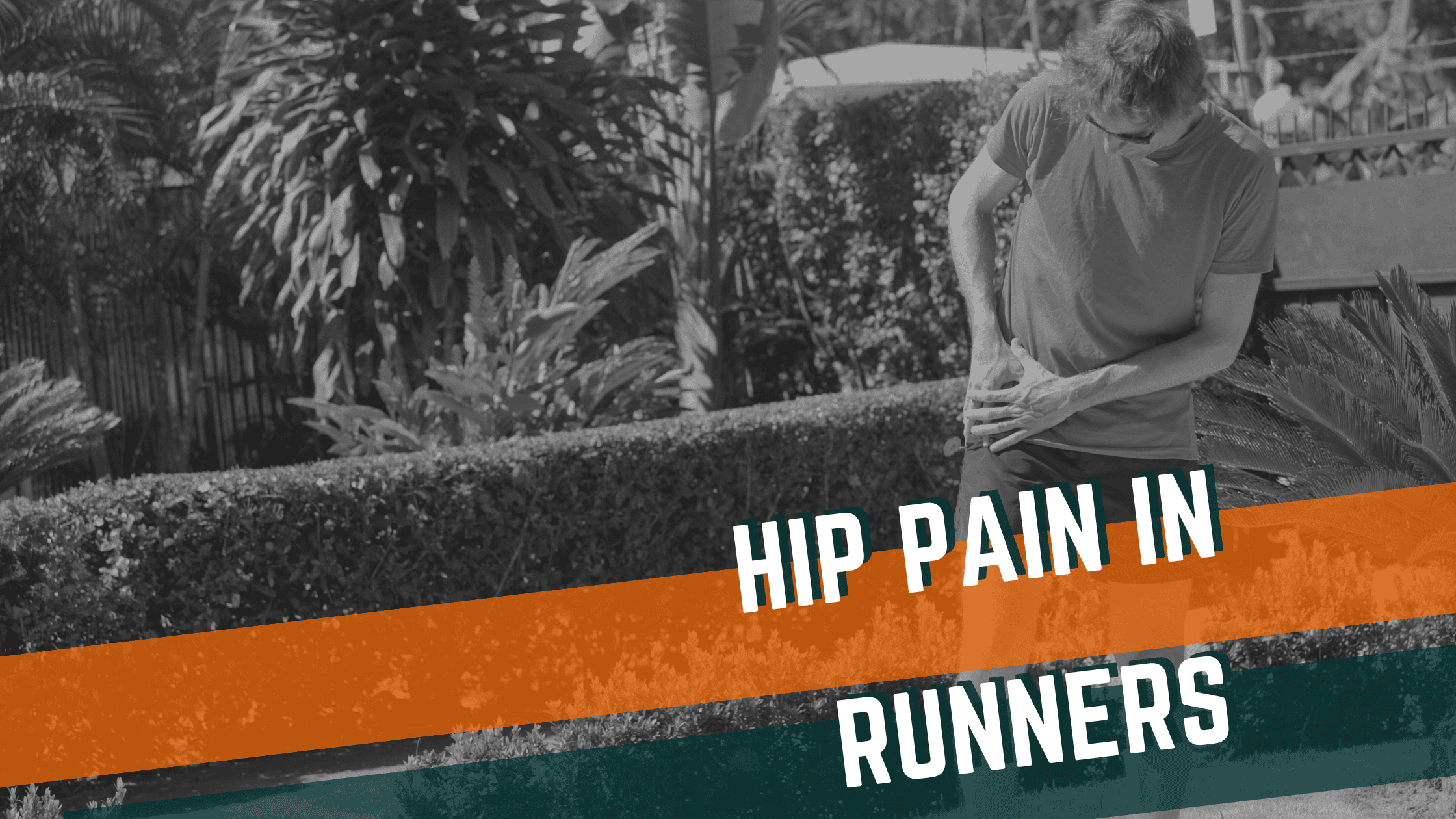
A Guide to Conditions Treated with Dry Needling
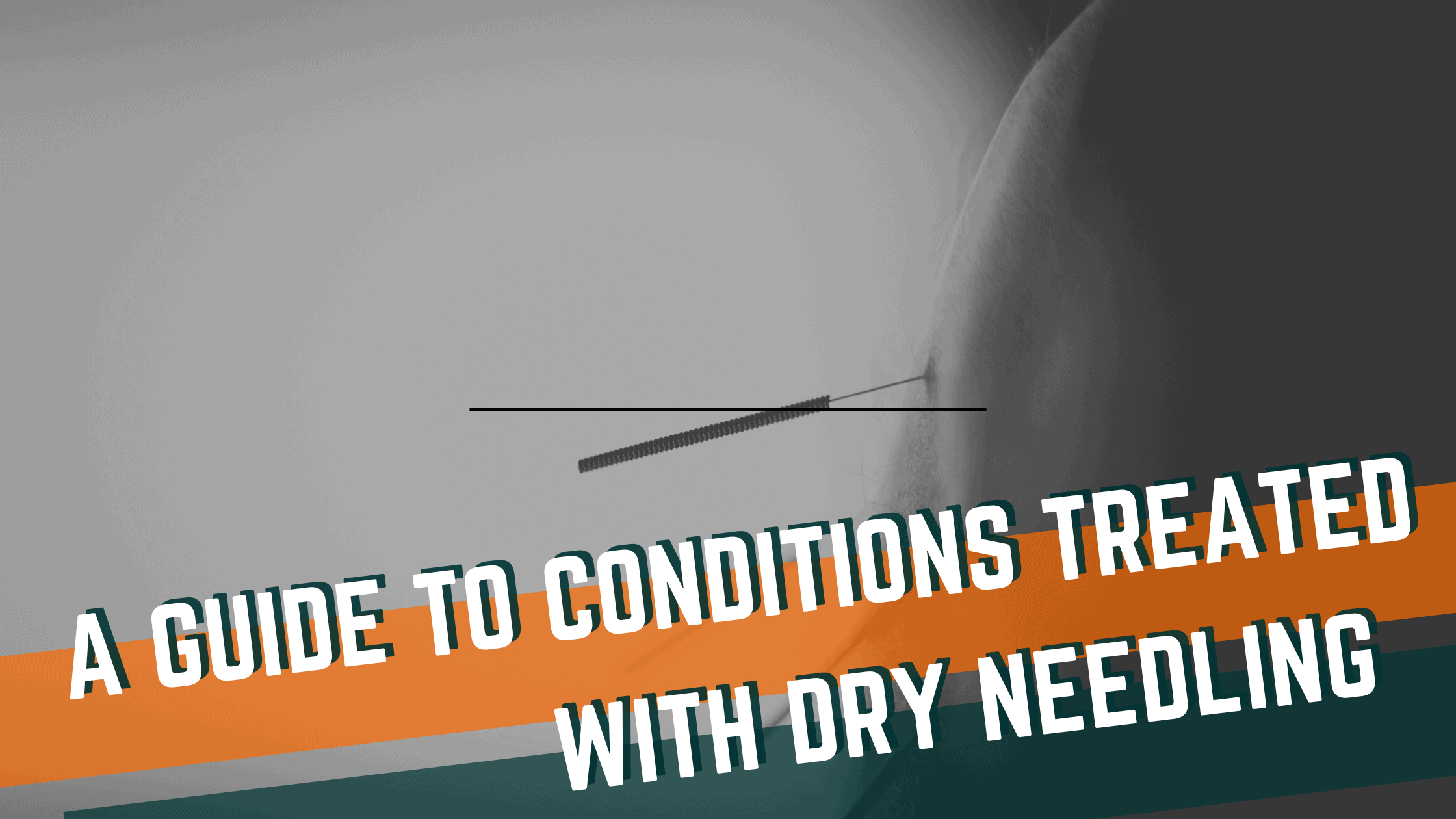
Reconnect to the CORE Postpartum: Pelvic Floor Exercises for Postpartum Healing
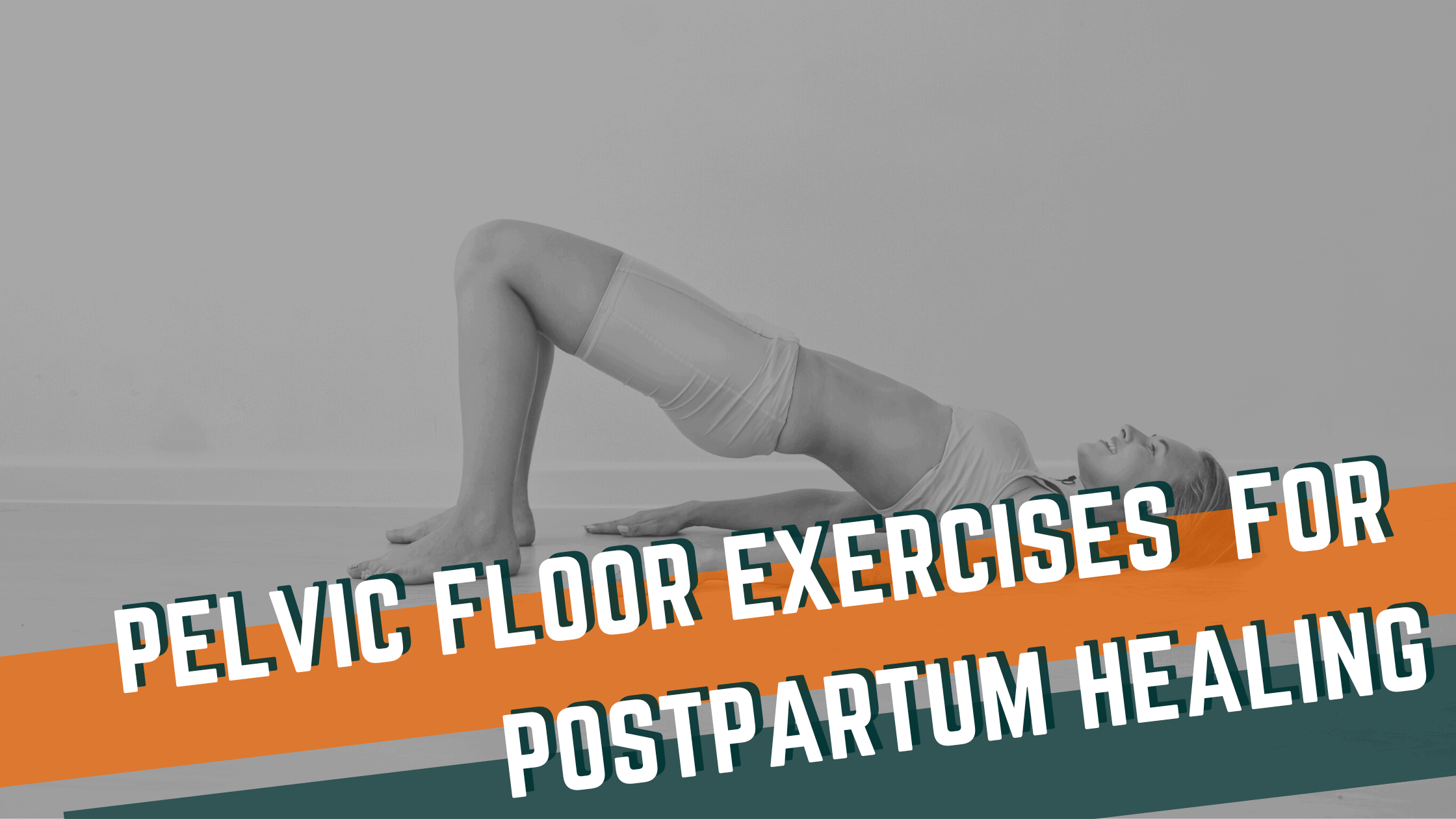
Preventing Back Pain in CrossFit: Key Considerations for Training Safely

